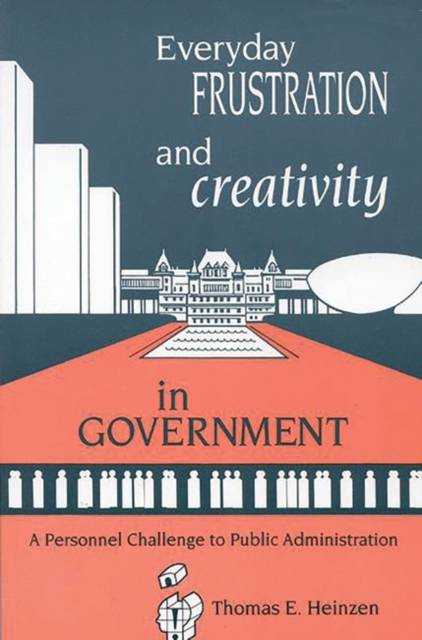
- Afhalen na 1 uur in een winkel met voorraad
- Gratis thuislevering in België vanaf € 30
- Ruim aanbod met 7 miljoen producten
- Afhalen na 1 uur in een winkel met voorraad
- Gratis thuislevering in België vanaf € 30
- Ruim aanbod met 7 miljoen producten
Everyday Frustration and Creativity in Government
A Personnel Challenge to Public Administration
Thomas E Heinzen
€ 93,45
+ 186 punten
Uitvoering
Omschrijving
Although George Pataki campaigned for change, most of the human infrastructure he inherited is unlikely to change. The psychological consequences to the people of New York State's government will continue to develop even under new leadership. Frustrations caused by downsizing, reduced budgets, institutional constraints, and stalled careers have led to a variety of very human responses: self-denigrating humor, clinical depression, career compromises, organizational sabotage-and several forms of creativity. This book treats the New York State bureaucracy as a living laboratory, documenting the ways in which people at work for New York State respond to the unavoidable frustrations of government service. This living laboratory was examined using case studies, interviews, and large-scale surveys. The studies included members of every state agency, the Public Employees Federation, the Civil Service Employees Association, the Governor's Office of Employee Relations and a variety of privatized services. The portrait that emerges is a governmental bureaucracy whose facade is distressingly grey, values are frequently compromised, and experience is often clinically depressing. But beneath it all is an additional layer of lively plotting, creative coping, and proactive circumvention. This book identifies both levels of the psychological experience, anticipates future crises within New York State, and offers a humanistic philosophy capable of transforming these developing conflicts into enduring creativity.
Specificaties
Betrokkenen
- Auteur(s):
- Uitgeverij:
Inhoud
- Aantal bladzijden:
- 192
- Taal:
- Engels
- Reeks:
Eigenschappen
- Productcode (EAN):
- 9781567500912
- Verschijningsdatum:
- 1/01/1994
- Uitvoering:
- Paperback
- Formaat:
- Trade paperback (VS)
- Afmetingen:
- 156 mm x 234 mm
- Gewicht:
- 276 g

Alleen bij Standaard Boekhandel
+ 186 punten op je klantenkaart van Standaard Boekhandel
Beoordelingen
We publiceren alleen reviews die voldoen aan de voorwaarden voor reviews. Bekijk onze voorwaarden voor reviews.










